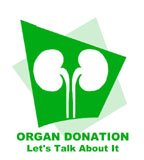Myths about organ donation should be dispelled
Published in Asian Age on 8/26/2006 9:31:23 PM
- By Dr Vatsala Trivedi
Myth 1: Doctors will not try to keep the organ donor patient alive if they know he/ she is a donor. Fact: There are two separate medical teams for the treatment and the transplant. Until all lifesaving efforts fail and death is determined, the Organ Procurement Organisation (OPO) is not notified. Also, OPO does not notify the transplant team until the family has consented to donation.
Myth 2: Organs are removed after the donors’ death. Fact: Surgeons wait till loss of bodily reflexes. The respirator is turned off for 10 minutes and a less effective air hose is put down the patient’s windpipe. ‘Brain death’ is declared if the patient doesn’t begin breathing without the machine.
Myth 3: The donor’s family is charged if one decides to donate organs. Fact: A donor’s family is not charged for donation. If a family believes it has been billed incorrectly, they should immediately contact the local OPO.
Myth 4: The wealthy and powerful have precedent over the poor for organ transplantation. Fact: The organ allocation and distribution system is blind to wealth or social status. The length of time it takes to receive a transplant is governed by many factors, including blood type, length of time on the waiting list, severity of illness and other medical criteria. The fairer medical systems allocate vital organs to those considered best able to survive the anti-rejection drugs and limitations of a transplant organ.
Myth 5: All organs of the donor’s body are removed.
Fact: As a donor you may specify what organs you want donated. Your wishes will be followed.
Myth 6: Only heart, liver and kidneys can be transplanted. Fact: The pancreas, lungs, small and large intestines, and the stomach also can be transplanted.
Human-to-human transplantation of organs has been accepted by doctors worldwide as the best line of treatment and often the only one for a wide range of fatal diseases such as End Stage Renal Disease (kidney failure). Both, a living as well as a ‘brain dead’ person can donate organs. A living donor can donate one of his kidneys and a part of the liver. After natural death only a few tissues can be donated (like cornea, bone, skin and blood vessels) whereas after brain death almost 37 different organs and tissues can be donated including critical organs such as kidneys, heart, liver and lungs.
India still lags behind in making a significant dent with regards to organ donation. Annually, while over 1,00,000 Indians suffer from End Stage Renal Disease, only a mere 3,000 are recipients of a donor kidney, of which only a small percentage are cadaver organs. In fact, the total number of patients who have received cadaver kidneys in India from 1995 to 2003 is only 5242, an abysmally small figure. The major problem now facing transplant surgery is a critical shortage of available organs.
For years, India had the reputation of being a "warehouse for kidneys" and an "organ bazaar" as poverty forced people to sell their kidneys commercially. With a view to prohibiting the sale of organs in India and to streamline organ donations and transplant activities, the government introduced The Human Organ Transplantation Act in 1994. aimed at — curtailing the kidney racket by introducing a rule that states that only a first-relative can be a living donor, to legalise the definition of "brain death", and to encourage cadaveric organ transplants.
The Act legalised the concept of ‘brain death’ for the first time in India making organ transplants from brain dead donors possible. Improved infrastructure such as ventilators and other emergency measures are necessary to improve the lives of the accident victims. Also, routine ‘brain death’ certification in neurosurgical wards could significantly increase the number of cadaver donors. Furthermore, people need to be educated about the futility of keeping brain dead victims ‘alive’ on support system at ICUs as ‘brain death’ is death and not euthanasia. The functions of the heart and the lungs can be artificially maintained by machines whereas that of brain death cannot be, till date. Hence, when due to any cause, the brain is irreparably damaged; the brain dies and the organs stop working. It is at this critical moment with the consent of relatives that the brain dead individual becomes an organ donor.
Until 1997, only four hospitals in India were undertaking cadaver transplants. However, now more hospitals are taking up the programme. According to a "Public Attitude Survey to Organ Donation", less that 50 per cent of the population was willing to consider solid organ donation, and the concept of "brain death" was new to most people surveyed. Twelve years after the Human Organ Transplantation Act has been passed, the cadaver programme in India is still in its infancy because of certain myths.
If one wishes to donate organs, the family must be informed first. The donor card forms are easily available.
Visit www.ztccmumbai.org for donor forms. Dr Vatsala Trivedi is secretary, Zonal Transplant Coordination Committee (ZTCC), Mumbai
Link: http://www.asianage.com/main.asp?layout=2&cat1=146&cat2=147&newsid=243336


0 Comments:
Post a Comment
<< Home